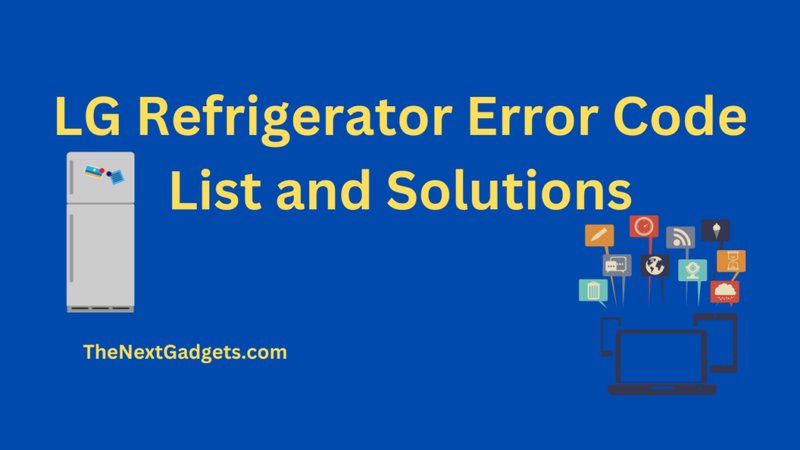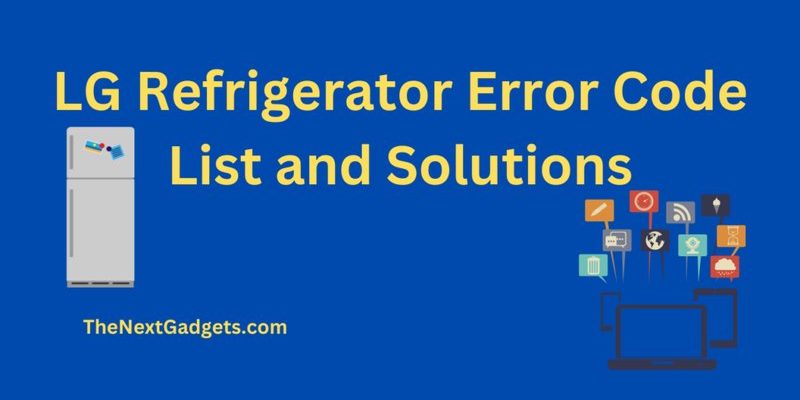
The E3 error code is a common issue that many LG refrigerator owners encounter. Essentially, it’s a signal from your fridge indicating that something isn’t quite right. Imagine your fridge as a person trying to communicate that it has a headache. It’s a little nudge to let you know there’s a potential problem under the hood—often related to a defrosting issue. But here’s the big question: if this error pops up, is it something you need to shell out money to fix, or is it covered under your warranty?
Understanding the E3 Error Code
So, what exactly does this pesky E3 code mean? In simple terms, the E3 error code usually relates to the refrigerator’s defrost system. Think of your fridge like a hardworking ice cream truck. It needs to defrost every once in a while to keep running smoothly. When the defrost sensor detects a problem, the E3 error shows up to alert you that the defrost cycle isn’t working as it should.
When your fridge can’t defrost properly, it might mean that ice is building up where it shouldn’t be. This can restrict airflow and prevent your fridge from maintaining the right temperature, just like how trying to breathe with a blocked nose isn’t quite effective. If left unchecked, it could lead to food spoilage and higher electricity bills since the fridge is working overtime to keep things cool.
Now, you might be wondering, “What causes this defrost issue in the first place?” Well, it could be due to a malfunctioning defrost sensor, a damaged thermostat, or even a problem with the defrost heater. Sometimes, it’s just a simple glitch in the system. Either way, it’s crucial to address it sooner rather than later before it turns into a bigger headache.
Is It Covered Under Warranty?
Here’s the deal: understanding what your warranty covers can feel a bit like reading through a long novel without a plot twist. But fear not! Typically, LG offers a warranty that covers parts and labor for certain components for a limited period. The real focus is on what’s considered a “defect” versus regular wear and tear.
Most LG refrigerators come with a one-year warranty for parts and labor on the entire machine and a longer warranty on certain parts like the compressor. The E3 error, since it’s related to the defrost system, may fall under warranty if it’s due to a manufacturing defect. If the error emerges shortly after purchasing the fridge, there’s a decent chance it’s covered, especially if it’s determined to be a fault from the manufacturing side.
However, if the issue results from external factors like power surges or user mishandling, the warranty might not cover it. It’s always a good idea to check the specifics in your warranty documentation or contact LG customer support to get clarity. They can guide you on whether it’s something they’ll fix at no cost or if you might need to consider other options, like a service call.
Steps to Take When You See E3 Code
Alright, so you’ve spotted the E3 error. What next? First things first, don’t panic! The initial step is to perform a quick reset. Unplug your fridge for about 10 minutes, then plug it back in. This can sometimes resolve minor glitches, much like rebooting a computer that’s acting up.
If the error persists, it might be time to delve a little deeper. Check the vents inside the refrigerator and freezer to ensure they’re not blocked by food items. Restricted airflow can exacerbate defrost issues. Also, inspect the door seals for any signs of wear and tear. Sometimes, a poor seal can lead to warm air entering the fridge, throwing everything off balance.
Most importantly, if these steps don’t solve the problem, reach out to LG or a certified technician. They can diagnose whether the issue is indeed something that warranty can cover. Remember, tampering with the refrigerator on your own can sometimes void the warranty, so always proceed with caution.
Preventative Tips to Avoid Future Issues
To keep your refrigerator—and your peace of mind—in good working order, a little preventative care goes a long way. Think of your fridge like a car. Regular maintenance checks can keep it running smoothly for years.
Start by giving your fridge a little breathing room. Ensure it’s not too close to the wall, which allows for adequate ventilation and prevents overheating. Regularly clean the condenser coils at the back of the fridge. Dust and pet hair can collect there, making the compressor work harder than necessary.
Also, keep an eye on the refrigerator’s temperature settings. Make sure they’re set according to the manufacturer’s recommendations. Keeping the temperature too low can lead to unnecessary ice buildup, which might trigger a defrost error.
Lastly, don’t overload your fridge. Imagine trying to jog while carrying a stack of books. It can be done, but it’s not very efficient. Overloading the fridge can block air circulation, leading to uneven cooling and potential issues down the line.
By staying proactive and attentive to your fridge’s needs, you can minimize the chance of running into dreaded error codes and enjoy a long-lasting relationship with your appliance. If issues arise, remember, you’ve got the warranty as your safety net, and LG support to guide you through.
